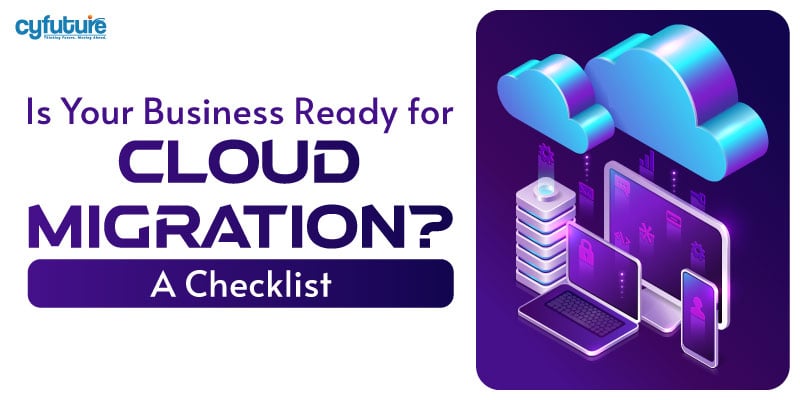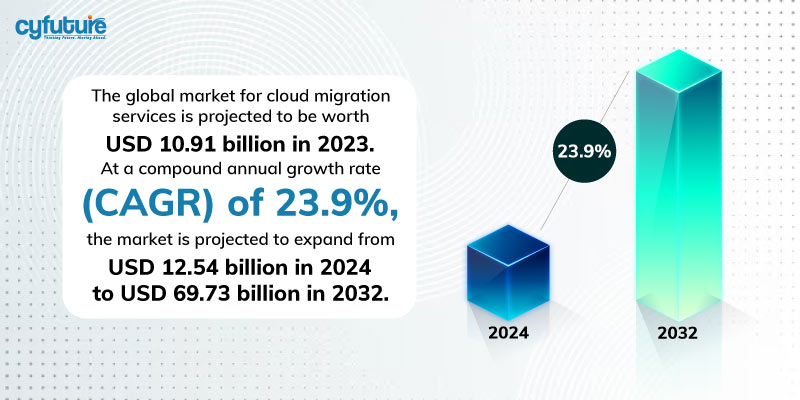-
Get Cloud GPU Server - Register Now!
Toggle navigation

Cloud migration service has become a game-changer for businesses looking for performance, scalability, and agility in today’s dynamic and changing digital market. This migration may have a challenging or predictable path, but every successful transfer requires meticulous planning and a well-defined execution strategy.
Furthermore, this would enable a business to migrate to the cloud smoothly if they properly follow a checklist that covers every crucial aspect of the transfer. However, the question remains: Is your business ready for migration to the cloud?
Well, there are many steps in making this transformational journey, from meticulous preparation to strategic foresight in aligning cloud adoptions with business objectives. While a misstep can create expensive setbacks, a well-orchestrated migration can be a catalyst for innovation, agility, and scalability.
In this comprehensive blog piece, we will ensure that your business covers everything it needs for the seamless transition to the cloud. Additionally, we will delve into the checklist, looking at the key considerations and steps necessary to have a successful cloud migration service.
However, let’s take a look into a few stats and data before delving deep.

Now, let’s delve into the deep knowledge pool!
Cloud migration service is the evolution of digital assets such as data, applications, and IT resources from on-premise locations to a cloud environment. The transition does assure several benefits in scalable, cost-effective, performance improvement, and facilitating the latest technologies such as AI and machine learning.
However, cloud migration is not the holy grail. The decision to migrate must be underpinned by a full comprehension of your business objectives, the possible operational implications, and the long-term strategic value of cloud adoption.
The first step in the journey of cloud migration constitutes a deep assessment of your business objectives and how the adoption of the cloud aligns with such goals. Ask yourself the following questions:
Cloud migration will be aligned with the enterprise’s objectives, ensuring that all understanding of the roadmap to the journey is clear and that every decision taken has a purpose.
It is essential to get to the granular level of your existing IT infrastructure before migrating to the cloud. It would entail:
The findings from a comprehensive audit of the IT infrastructure will be instrumental in deciding upon your cloud migration strategy and enable any decisions about bottlenecks and opportunities.
This is one of the most important decisions in this whole process. As this would be the partner that would guide through the entire process, the choice of cloud migration service provider has to be right for the business needs for which the migration is done and that offers the required capability. Consider the following:
However, the selection of a correct cloud migration service provider ensures that the migration is smooth and continuous in the cloud.
A well-defined cloud migration strategy will help mitigate the risks involved and ensure a seamless migration. The following are key imperatives your strategy must touch on:
A proper cloud migration strategy will walk you through the complexities of making the transition to realize your business objectives.
Security is an issue that most entities would not want to compromise when opting for cloud migration. Ensuring that your cloud environment is both secure and compliant with all industry regulations is critical in protecting both business information and customer data. Consider the following:
Addressing security and compliance requirements early in the migration process can protect your business and gain customer trust.
Among the big drivers of cloud migration, cost savings are looming large. However, one needs to be sure about calculating the total cost of ownership to ensure that it’s economically viable to make a move to the cloud. The TCO will consist of:
You can make strategic decisions in this regard to shed light on the financial implications of cloud migration by calculating TCO, and you will be able to bring forth optimal costs in the long run.
Data governance is the foundation that helps you maintain control over your data in the cloud. As your organization moves to the cloud, consider the following:
Good data governance will grant you full control over your data, ensuring that associated risks are reduced and that legal and regulatory requirements are met.

Testing forms a very important phase of cloud migration. Before one commits to the cloud fully, perform extensive testing to validate whether the migration will meet the desired need in business. This includes:
Comprehensive testing of the migration will have the ability to let you know most of the issues before affecting your business.
Your workloads are now in the cloud, but this does not mean that the cloud migration journey is complete. Indeed, post-migration optimization will be key to full value from the adoption of the cloud. A few things to consider:
With post-migration optimization, you would have a more efficient, secure cloud environment that better aligns with your business goals.
Considering the complexities of cloud migration, most organizations consider the best strategy to ally with cloud migration services. These cloud migration services provide several services, including:
Partnership with cloud migration service providers will not only minimize most risks but also ensure the transition is successful.
The cloud migration landscape is full of complexities, but the rewards can be truly transformational. Well-planned and executed, cloud migration can introduce your organization to unparalleled business growth, innovation, and operational efficiency. Your organization will be confident in overcoming intricacies related to cloud adoption, and seamlessly navigating the transition, by sticking to the comprehensive checklist presented here.
The significance of being well-prepared for this significant expedition cannot be overstated. It is imperative to do a comprehensive assessment of your existing IT setup, choose the cloud service provider that best meets your requirements, enforce stringent security and compliance protocols, and synchronize your cloud migration strategy with overarching business goals. By using expert cloud migration services and focusing on continuous optimization after transfer, your business can take advantage of the entire spectrum of cloud possibilities and gain a competitive edge in the digital era.
Ready to elevate your business with a seamless cloud migration? Partner with us today and unlock the future of innovation and efficiency.
Compatibility is determined through a detailed assessment of your current IT environment, software, and network capability. It should list the possible roadblocks and allow you to make such adjustments to be seamless relative to integration with cloud platforms.
Post-migration optimization is very important to effectively realize cloud migration benefits. Continuous monitoring and performance tuning will keep the cloud environment aligned with your needs. Regular updates and security assessments will also be important to maintain efficiency and security.
Of course, cloud migration services possess the necessary expertise, tools, and best practices to make the process of migration painless. Everything can be done from strategy development to the implementation of such strategy via these services. Minimum risks and no disturbance to your business operations are some added advantages.
Well, it’s highly worth it, as this way your team can be quite conversant with this new environment. Continuous education on cloud technologies and best practices will empower your employees to fully leverage the capabilities of the cloud to make their jobs innovative and efficient.